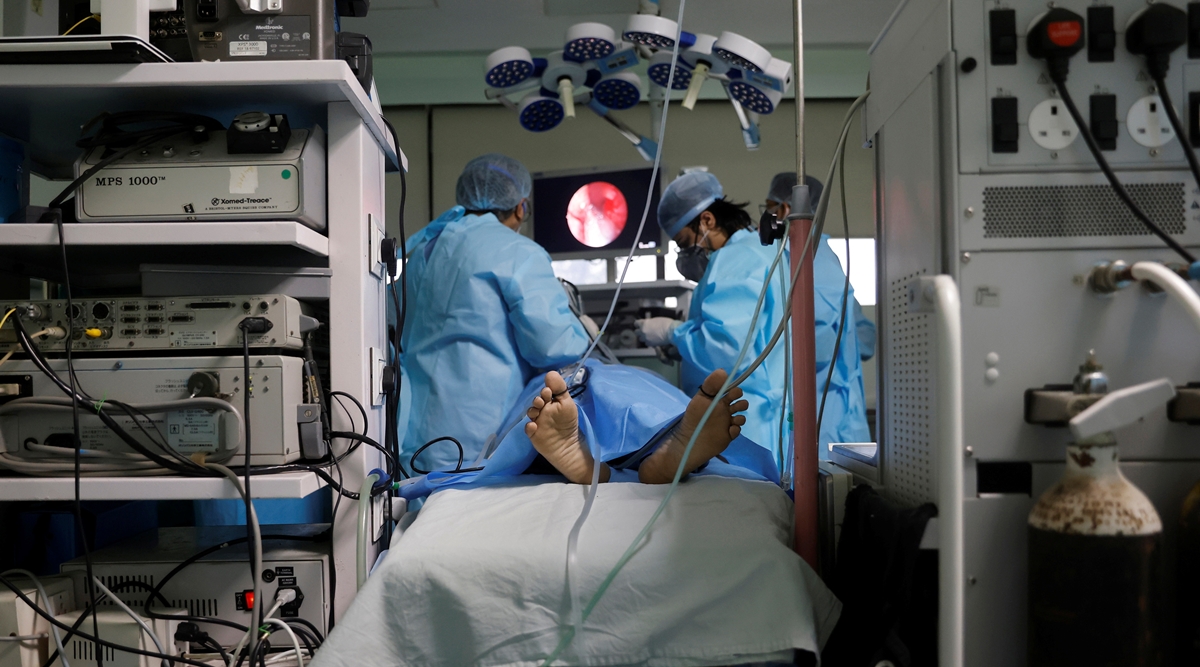 Punjab on May 19 had declared black fungus as a notified disease under the Epidemic Diseases Act, making it mandatory for all healthcare facilities - both private and state-run - to report every suspected and confirmed case. (File photo)
Punjab on May 19 had declared black fungus as a notified disease under the Epidemic Diseases Act, making it mandatory for all healthcare facilities - both private and state-run - to report every suspected and confirmed case. (File photo) Every eighth patient of mucormycosis, commonly known as black fungus, in Punjab left the hospitals, mainly private facilities, against doctor’s advice in the last two months largely due to their inability to afford the high cost of treatment.
Punjab on May 19 had declared black fungus as a notified disease under the Epidemic Diseases Act, making it mandatory for all healthcare facilities – both private and state-run – to report every suspected and confirmed case.
Since being declared a notified disease, Punjab reported 672 cases of black fungus, of which 599 patients were from the state. Of the total cases, 81 patients, including 60 from private facilities, decided to discontinue their treatment.
The medical fraternity terms such patients as LAMA (Leave Against Medical Advice) LAMA cases.
As per the official data collected by the Punjab health department, six of these LAMA cases have now been tracked down of which two have been put under treatment again and four were found cured.
Speaking to The Indian Express, Dr Gagandeep Singh Grover, nodal officer for mucormycosis in state, confirmed that the black fungus patients mostly sought discharge from private healthcare facilities due to high costs of medicines and injections. “We conducted a survey recently to identify all the patients who had left in the middle of treatment and have so far managed to persuade at least two of them to return to government hospitals where treatment is free, except the minor cost for surgery. In many cases, patients have also shifted from private hospitals to government ones due to the cost factor,” Grover said.

He said that each Liposomal Amphotericin-B injection, which the black fungus are administered for at least 2-3 weeks depending on the severity of the infection, costs Rs 5,000 per vial. A patient may need at least 3-4 vials in a day.
Similarly, another medicine, Posaconazole tablet, costs a patient at least Rs 1,200 to Rs 1,600 per day with each 100 mg tablet priced at Rs 400. Patients need to take three to four tablets a day and continue the treatment for 3-6 months, even after discharge from a hospital.
“Yes, black fungus treatment is very costly. But most patients were not aware that these medicines are being provided free of cost in government hospitals. We are trying to trace all of them and admit them to government hospitals, if necessary,” Grover said.
He added that when the second wave of Covid was at its peak between April and June, the state was reporting around 15-20 mucormycosis cases in a day. That number has now come down to 1-2 cases daily, which on some days drops to zero.
“Around 80 per cent of black fungus cases reported in Punjab were of Covid – active and post-recovery – patients and 78 per cent of them had diabetes. Only three cases were of patients aged less than 18 years, while a majority of them were in the 45+ age group,” he said.
The senior doctor said that a majority of black fungus patients have undergone some surgical procedure – minor or major – depending on the severity of the infection. “To save the eyes, nose, jaws, and other body parts, surgery has to be performed. In most cases, the disease reaches the nasal septum, necessitating surgery. We are in the process of collecting data on how many patients have lost their eyes or suffered major deformity as the government has announced that they will be giving disability benefits to all such patients,” Grover added.
- The Indian Express website has been rated GREEN for its credibility and trustworthiness by Newsguard, a global service that rates news sources for their journalistic standards.

